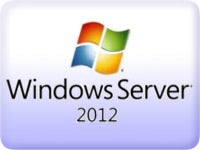Microsoft officially announced its Windows Server 2012 launch timetable during its Worldwide Partner Conference in Toronto.
During the first week of August, Microsoft will release Windows Server 2012 to manufacturing and will start delivering the operating system to OEMs. Retail availability will follow in September. Microsoft says that over half a million pre-release versions of Windows Server 2012 have been downloaded to date.
And when the OS officially goes on sale, IT buyers will have fewer editions to choose from. For Windows 2012, Microsoft whittled down the purchasing options to just four.
 The Foundation edition is an OEM-only, 15-user version of the server OS that lacks virtualization support. Next is the SMB-flavored Essentials edition — the Small Business Server release is a goner — that costs $425. While it also lacks native virtualization, it can accommodate up to 25 users.
The Foundation edition is an OEM-only, 15-user version of the server OS that lacks virtualization support. Next is the SMB-flavored Essentials edition — the Small Business Server release is a goner — that costs $425. While it also lacks native virtualization, it can accommodate up to 25 users.
Rounding out the choices are Standard and Datacenter options. The Standard edition costs $882 for the full suite of Windows Server 2012 functionality but is limited to two virtual instances. The Datacenter edition carries a price tag of $4,809 and offers support for an unlimited number of virtual instances along with non-disruptive virtual workload migration capabilities aimed at private and hybrid cloud implementations.
Microsoft claims that Windows Server 2012 is its most “cloud-optimized” server OS yet. In this update, the software giant has taken steps to establish and connect with cloud services a little more seamlessly.
Yesterday, the company teamed with Trend Microto give one of the first glimpses of Microsoft’s strategy to boost Windows Server’s relevance in a growing cloud services marketplace. The companies announced that access to Trend Micro’s Worry-Free Business Security Services will be integrated into the Windows Server 2012 Essentials management console, enabling cloud-based anti-malware protection nearly right out of the box.
Windows Server 2012 also features upgraded virtual workload capabilities and management options, particularly in the Datacenter edition. According to the company, the operating system’s virtualization technology, Hyper-V, now supports up to 1 TB of memory per virtual machine and 64 TB of storage per virtual disk.
Pedro Hernandez is a contributing editor at InternetNews.com, the news service of the IT Business Edge Network, the network for technology professionals. Follow him on Twitter @ecoINSITE.

